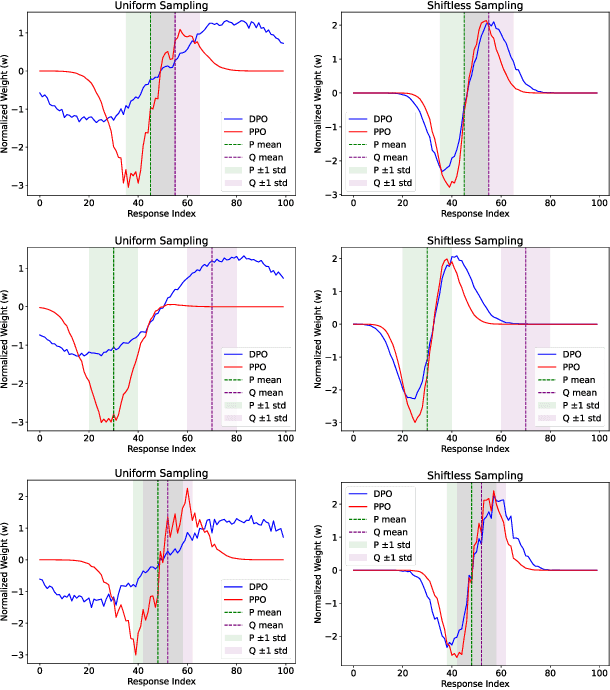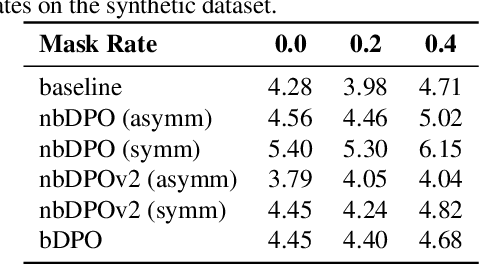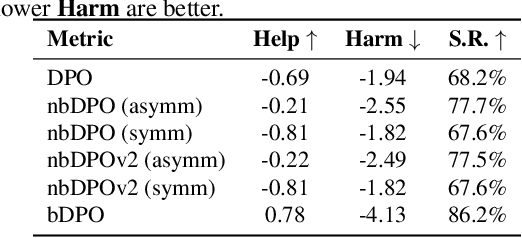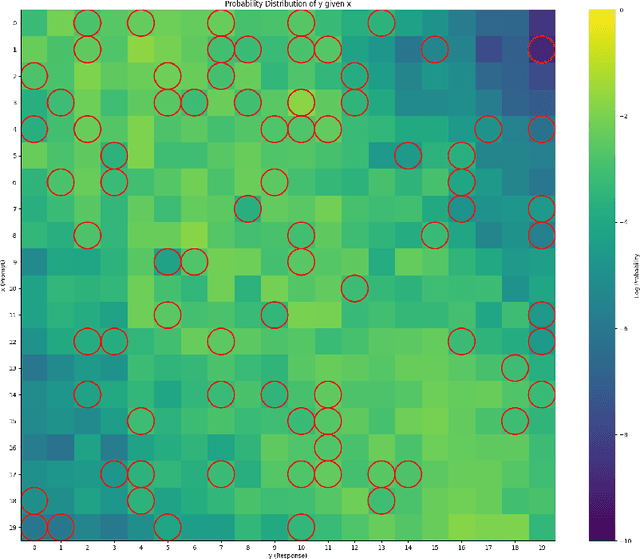Jenq-Neng Hwang
Causal Reasoning Elicits Controllable 3D Scene Generation
Sep 18, 2025Abstract:Existing 3D scene generation methods often struggle to model the complex logical dependencies and physical constraints between objects, limiting their ability to adapt to dynamic and realistic environments. We propose CausalStruct, a novel framework that embeds causal reasoning into 3D scene generation. Utilizing large language models (LLMs), We construct causal graphs where nodes represent objects and attributes, while edges encode causal dependencies and physical constraints. CausalStruct iteratively refines the scene layout by enforcing causal order to determine the placement order of objects and applies causal intervention to adjust the spatial configuration according to physics-driven constraints, ensuring consistency with textual descriptions and real-world dynamics. The refined scene causal graph informs subsequent optimization steps, employing a Proportional-Integral-Derivative(PID) controller to iteratively tune object scales and positions. Our method uses text or images to guide object placement and layout in 3D scenes, with 3D Gaussian Splatting and Score Distillation Sampling improving shape accuracy and rendering stability. Extensive experiments show that CausalStruct generates 3D scenes with enhanced logical coherence, realistic spatial interactions, and robust adaptability.
Is Meta-Learning Out? Rethinking Unsupervised Few-Shot Classification with Limited Entropy
Sep 16, 2025



Abstract:Meta-learning is a powerful paradigm for tackling few-shot tasks. However, recent studies indicate that models trained with the whole-class training strategy can achieve comparable performance to those trained with meta-learning in few-shot classification tasks. To demonstrate the value of meta-learning, we establish an entropy-limited supervised setting for fair comparisons. Through both theoretical analysis and experimental validation, we establish that meta-learning has a tighter generalization bound compared to whole-class training. We unravel that meta-learning is more efficient with limited entropy and is more robust to label noise and heterogeneous tasks, making it well-suited for unsupervised tasks. Based on these insights, We propose MINO, a meta-learning framework designed to enhance unsupervised performance. MINO utilizes the adaptive clustering algorithm DBSCAN with a dynamic head for unsupervised task construction and a stability-based meta-scaler for robustness against label noise. Extensive experiments confirm its effectiveness in multiple unsupervised few-shot and zero-shot tasks.
Memory-Efficient Visual Autoregressive Modeling with Scale-Aware KV Cache Compression
May 26, 2025Abstract:Visual Autoregressive (VAR) modeling has garnered significant attention for its innovative next-scale prediction approach, which yields substantial improvements in efficiency, scalability, and zero-shot generalization. Nevertheless, the coarse-to-fine methodology inherent in VAR results in exponential growth of the KV cache during inference, causing considerable memory consumption and computational redundancy. To address these bottlenecks, we introduce ScaleKV, a novel KV cache compression framework tailored for VAR architectures. ScaleKV leverages two critical observations: varying cache demands across transformer layers and distinct attention patterns at different scales. Based on these insights, ScaleKV categorizes transformer layers into two functional groups: drafters and refiners. Drafters exhibit dispersed attention across multiple scales, thereby requiring greater cache capacity. Conversely, refiners focus attention on the current token map to process local details, consequently necessitating substantially reduced cache capacity. ScaleKV optimizes the multi-scale inference pipeline by identifying scale-specific drafters and refiners, facilitating differentiated cache management tailored to each scale. Evaluation on the state-of-the-art text-to-image VAR model family, Infinity, demonstrates that our approach effectively reduces the required KV cache memory to 10% while preserving pixel-level fidelity.
Adapting SAM 2 for Visual Object Tracking: 1st Place Solution for MMVPR Challenge Multi-Modal Tracking
May 23, 2025Abstract:We present an effective approach for adapting the Segment Anything Model 2 (SAM2) to the Visual Object Tracking (VOT) task. Our method leverages the powerful pre-trained capabilities of SAM2 and incorporates several key techniques to enhance its performance in VOT applications. By combining SAM2 with our proposed optimizations, we achieved a first place AUC score of 89.4 on the 2024 ICPR Multi-modal Object Tracking challenge, demonstrating the effectiveness of our approach. This paper details our methodology, the specific enhancements made to SAM2, and a comprehensive analysis of our results in the context of VOT solutions along with the multi-modality aspect of the dataset.
TEMPURA: Temporal Event Masked Prediction and Understanding for Reasoning in Action
May 02, 2025Abstract:Understanding causal event relationships and achieving fine-grained temporal grounding in videos remain challenging for vision-language models. Existing methods either compress video tokens to reduce temporal resolution, or treat videos as unsegmented streams, which obscures fine-grained event boundaries and limits the modeling of causal dependencies. We propose TEMPURA (Temporal Event Masked Prediction and Understanding for Reasoning in Action), a two-stage training framework that enhances video temporal understanding. TEMPURA first applies masked event prediction reasoning to reconstruct missing events and generate step-by-step causal explanations from dense event annotations, drawing inspiration from effective infilling techniques. TEMPURA then learns to perform video segmentation and dense captioning to decompose videos into non-overlapping events with detailed, timestamp-aligned descriptions. We train TEMPURA on VER, a large-scale dataset curated by us that comprises 1M training instances and 500K videos with temporally aligned event descriptions and structured reasoning steps. Experiments on temporal grounding and highlight detection benchmarks demonstrate that TEMPURA outperforms strong baseline models, confirming that integrating causal reasoning with fine-grained temporal segmentation leads to improved video understanding.
Gradient Imbalance in Direct Preference Optimization
Feb 28, 2025



Abstract:Direct Preference Optimization (DPO) has been proposed as a promising alternative to Proximal Policy Optimization (PPO) based Reinforcement Learning with Human Feedback (RLHF). However, empirical evaluations consistently reveal suboptimal performance in DPO compared to common RLHF pipelines. In this work, we conduct a systematic analysis of DPO's training dynamics and identify gradient imbalance as a critical limitation. We demonstrate theoretically and empirically that this imbalance perturbs optimization trajectories, destabilizes learning, and induces suboptimal convergence. To address this issue, we propose Balanced-DPO, a simple yet effective modification to the DPO objective that introduces a computationally efficient gradient reweighting mechanism. Our experiments demonstrate the effectiveness of Balanced-DPO, validating the theoretical findings and confirming that addressing gradient imbalance is key to improving DPO's performance, highlighting a promising direction for future research.
Bayesian Optimization for Controlled Image Editing via LLMs
Feb 26, 2025



Abstract:In the rapidly evolving field of image generation, achieving precise control over generated content and maintaining semantic consistency remain significant limitations, particularly concerning grounding techniques and the necessity for model fine-tuning. To address these challenges, we propose BayesGenie, an off-the-shelf approach that integrates Large Language Models (LLMs) with Bayesian Optimization to facilitate precise and user-friendly image editing. Our method enables users to modify images through natural language descriptions without manual area marking, while preserving the original image's semantic integrity. Unlike existing techniques that require extensive pre-training or fine-tuning, our approach demonstrates remarkable adaptability across various LLMs through its model-agnostic design. BayesGenie employs an adapted Bayesian optimization strategy to automatically refine the inference process parameters, achieving high-precision image editing with minimal user intervention. Through extensive experiments across diverse scenarios, we demonstrate that our framework significantly outperforms existing methods in both editing accuracy and semantic preservation, as validated using different LLMs including Claude3 and GPT-4.
Pointmap Association and Piecewise-Plane Constraint for Consistent and Compact 3D Gaussian Segmentation Field
Feb 22, 2025Abstract:Achieving a consistent and compact 3D segmentation field is crucial for maintaining semantic coherence across views and accurately representing scene structures. Previous 3D scene segmentation methods rely on video segmentation models to address inconsistencies across views, but the absence of spatial information often leads to object misassociation when object temporarily disappear and reappear. Furthermore, in the process of 3D scene reconstruction, segmentation and optimization are often treated as separate tasks. As a result, optimization typically lacks awareness of semantic category information, which can result in floaters with ambiguous segmentation. To address these challenges, we introduce CCGS, a method designed to achieve both view consistent 2D segmentation and a compact 3D Gaussian segmentation field. CCGS incorporates pointmap association and a piecewise-plane constraint. First, we establish pixel correspondence between adjacent images by minimizing the Euclidean distance between their pointmaps. We then redefine object mask overlap accordingly. The Hungarian algorithm is employed to optimize mask association by minimizing the total matching cost, while allowing for partial matches. To further enhance compactness, the piecewise-plane constraint restricts point displacement within local planes during optimization, thereby preserving structural integrity. Experimental results on ScanNet and Replica datasets demonstrate that CCGS outperforms existing methods in both 2D panoptic segmentation and 3D Gaussian segmentation.
Learning to Learn Weight Generation via Trajectory Diffusion
Feb 03, 2025



Abstract:Diffusion-based algorithms have emerged as promising techniques for weight generation, particularly in scenarios like multi-task learning that require frequent weight updates. However, existing solutions suffer from limited cross-task transferability. In addition, they only utilize optimal weights as training samples, ignoring the value of other weights in the optimization process. To address these issues, we propose Lt-Di, which integrates the diffusion algorithm with meta-learning to generate weights for unseen tasks. Furthermore, we extend the vanilla diffusion algorithm into a trajectory diffusion algorithm to utilize other weights along the optimization trajectory. Trajectory diffusion decomposes the entire diffusion chain into multiple shorter ones, improving training and inference efficiency. We analyze the convergence properties of the weight generation paradigm and improve convergence efficiency without additional time overhead. Our experiments demonstrate Lt-Di's higher accuracy while reducing computational overhead across various tasks, including zero-shot and few-shot learning, multi-domain generalization, and large-scale language model fine-tuning.Our code is released at https://github.com/tuantuange/Lt-Di.
PackDiT: Joint Human Motion and Text Generation via Mutual Prompting
Jan 27, 2025



Abstract:Human motion generation has advanced markedly with the advent of diffusion models. Most recent studies have concentrated on generating motion sequences based on text prompts, commonly referred to as text-to-motion generation. However, the bidirectional generation of motion and text, enabling tasks such as motion-to-text alongside text-to-motion, has been largely unexplored. This capability is essential for aligning diverse modalities and supports unconditional generation. In this paper, we introduce PackDiT, the first diffusion-based generative model capable of performing various tasks simultaneously, including motion generation, motion prediction, text generation, text-to-motion, motion-to-text, and joint motion-text generation. Our core innovation leverages mutual blocks to integrate multiple diffusion transformers (DiTs) across different modalities seamlessly. We train PackDiT on the HumanML3D dataset, achieving state-of-the-art text-to-motion performance with an FID score of 0.106, along with superior results in motion prediction and in-between tasks. Our experiments further demonstrate that diffusion models are effective for motion-to-text generation, achieving performance comparable to that of autoregressive models.
 Add to Chrome
Add to Chrome Add to Firefox
Add to Firefox Add to Edge
Add to Edge